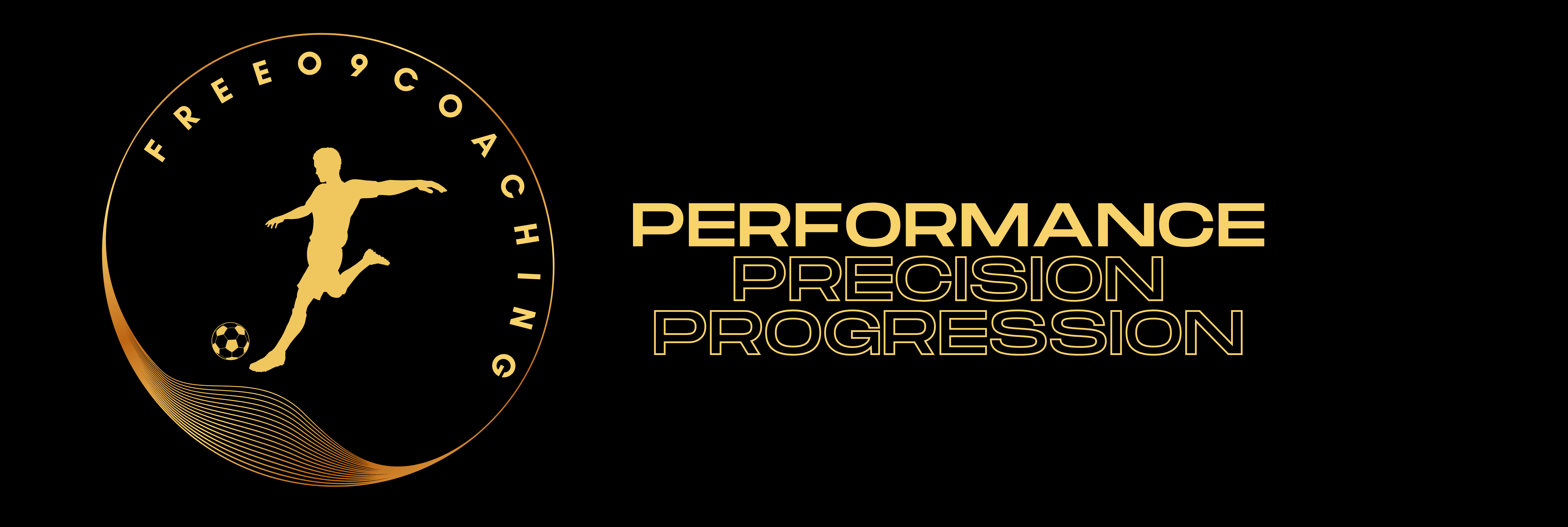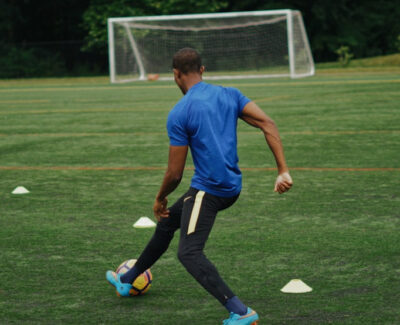Introduction

I get asked this a lot by coaches in my job, “where can I find drills/sessions I can use with my players”. it is something I covered in another post the best coaching resources.
It comes down to this, there are millions of sessions on the internet and if you do trawl through them and find one you like, it will still need to be changed and adapted to suit the needs of your players for you to get the best out of it. Session plans are ideas not one size fits all.
So, I thought I would put together a few ideas consisting of mainly technical practices for you to use. I have not added a lot of coaching detail and technical information, as I feel the best way to use these sessions is to impart your knowledge of the game to them.
Just remember, use them as a template and adapt them to meet the needs of your players.
Ball Mastery
This is the practice of technical routines in a tight amount of space, which allows players to get a large number of touches on the ball in a short amount of time.
The practice challenges players to control and manipulate the ball with all the different surfaces of their feet. The tight spaces condition players to take complete care with every touch of the ball to prevent them from losing it.
You only need a small amount of space for this practice, but it needs to be at a high intensity where the players are constantly being challenged and should replicate the game’s speed.
Ball Control

Instant control under pressure is the hallmark of a good player. Quality control gives the player valuable extra time on the ball and two crucial advantages.
First, it reduces the possibility of opposition getting into a challenge. Players are usually at their most vulnerable when they are receiving the ball; instant control makes the task of winning the ball slightly more difficult.
Second, good control allows the player to initiate their next move more quickly whether it’s a pass, dribble run with the ball or shot, they can do it that much quicker.
Control Techniques
Working in groups of three in a line, the central player focuses on their control techniques, whilst the outside player will be actively resting as servers.
The ball is played into the middle player at various heights where they try to take a maximum of two touches if they can. One touch to control the ball using the different techniques based on the height of the throw and one to return the ball to the server.
Each player will work for two minutes before swapping roles. Progress this to adding a bit of movement e.g., coming off at an angle and controlling it into space before passing back.
Goalkeeping
The goalkeeper is arguably the most important position on the field. A goalkeeper can win a game with one brilliant save or lose it with a simple mistake.
The nature of the position requires good technique, tactical knowledge, agility, speed, athleticism, confidence, bravery and good communication skills, these are essential for the goalkeeper and the team as they are the players with the best view of open play.
Here are some sessions to work on the ‘Set Position’, Distribution and Diving saves
Set Position

The goalkeeper starts by facing the first server between the goalposts, whilst the second server is at the front of the goal with 6 footballs placed in an arc.
Server 1 volleys the ball toward the goalkeeper to practice catching at face height. At any time, Server 2 can shout a command which means to spin, face play, get in the set position and defend the goal from a shot. Server 2 can be placed at any of the six balls to serve in a shot.
This means the goalkeeper has to find the server and adjust their positioning to suit that shot coming in.
Coaching Points
The goalkeeper has to turn quickly and find where server 2 is. They have to adjust themselves into the set position but also in a way that gives the server the least amount of goal to hit. Meaning they have to be at the correct angle in their goal.
If the goalkeeper leaves too much space at one side, stop the practice and show them from the striker’s point of view so they can see the space they are leaving.
Progress to altering the type of service from both servers (e.g., passing, dive left/right, high ball, scoops). Progress to changing the distance of the footballs and their angle of them (e.g., make football A and F even wider or B, C, D and E closer to the goal).
Distribution

The practice starts with a shot on goal – the goalkeeper can practice various saves depending on the type of service. For example scoop technique, ‘W’ technique etc.
The small goals and training poles are either given numbers. After every save, the coach calls out a number and the goalkeeper has to distribute the ball to that target.
- The Red line – Rolled Ball
- The Blue line – Overarm or Javelin throw
- The Green line – Volley or Half Volley
Coaching Points
The goalkeeper makes sure that the service is accurate. Ensure that it is played into or just ahead of the target but never behind. The ball must get to the target quickly, do not give the defending team time to recover and organise. Most importantly always use the correct technique.
Progress to assign points for accurate services e.g., the more points they get closest to the target. Progress to changing the target distances and allowing the goalkeeper to make their own decisions on the type of distribution needed.
Diving Saves

The goalkeeper starts by doing a short hurdle followed by quick feet through the ladder. Once the goalkeeper comes out of the ladder and gets in the ‘set’ position at the cone, the coach will volley the ball around head height forcing the keeper into a catch.
The goalkeeper will then return the ball to the coach who will then perform a side-foot shot to the left forcing the keeper to dive and make the save. The goalkeeper will then sprint to the goal where the second server will strike the ball forcing another diving save.
After the 3 saves the goalkeeper can return to the start and rest. Swap the goalkeepers until each of them has performed the practice three times.
The practice can be progressed to varying the height of the first ball in and the last shot. This can also be progressed further with time limits e.g., the goalkeeper has 5 seconds to get to the goal before the last shot is taken. Make sure to swap the practice over and work both sides of the goal.
Consider the basic principles of diving within the session and coach any of the common issues that may occur e.g., Goalkeepers jumping into a dive from a set position limiting the distance they dive.
Defending 1v1

Players will work in groups of 3 consisting of one attacker, one defender and one server (active rest). The practice starts with the server passing the ball to the attacker, which also signals the defender to close the ball down.
Each player will rotate one position after 2 minutes of work. The session can be progressed to the defender winning the ball and counter-attacking the goal to simulate the transition from defence to attack and vice versa.
It could also be progressed further into a 1v2 e.g., once the server passes the ball in they become active by supporting the attacking player. (Possibly introduce off-sides and a scoring line to give the defender some chance).
Progress further into a 2v2 to work on cover and balance. There are endless possibilities with this session, it just depends on what your players need to practice.
Finishing

This is a 7v7+2 (always an overload with the 2 spare players playing with the team in possession) game played within four 18×18 boxes and played in 4min games due to the intensity of the practice.
The ball is served in from the outside and the teams play. However, there are certain conditions in the game.
The players cannot score in the goal where they received the ball from the service – the coach serves the ball whenever the ball leaves the field of play.
They cannot score in the area where they regained possession but they can score in any one of the three other goals.
This game can also be progressed to a one-touch finish-only practice. There will be lots of repetition within this practice but also lots of opportunities to work through the key finishing principles.
Conclusion
As you can see from the simplicity of these training sessions, your players can hone in on their skills and techniques without the sessions being over complicated. Fundamentals are crucial for the long-term development of players and shouldn’t be underestimated as to their importance.
I used to spend hours as a child with a ball in the garden practising and it certainly helped me become a technically better player.
However, times have changed and there are more opportunities to play football, but as coaches, we have to give them the best possible experiences in training, by understanding what players need and then designing practices that meet those needs.
If you would like to see more session plans, videos and additional resources, The Coaches Voice has it all click here and enter the code BUDDY10 to receive 10% off an annual subscription



Great idea and concept Chris. Really useful to be able to access this information and template ideas in one place. Great work! Thank You ?
Thanks, Dean
Yes that’s the idea to use them as templates rather than an entire session that will have no benefit for your players